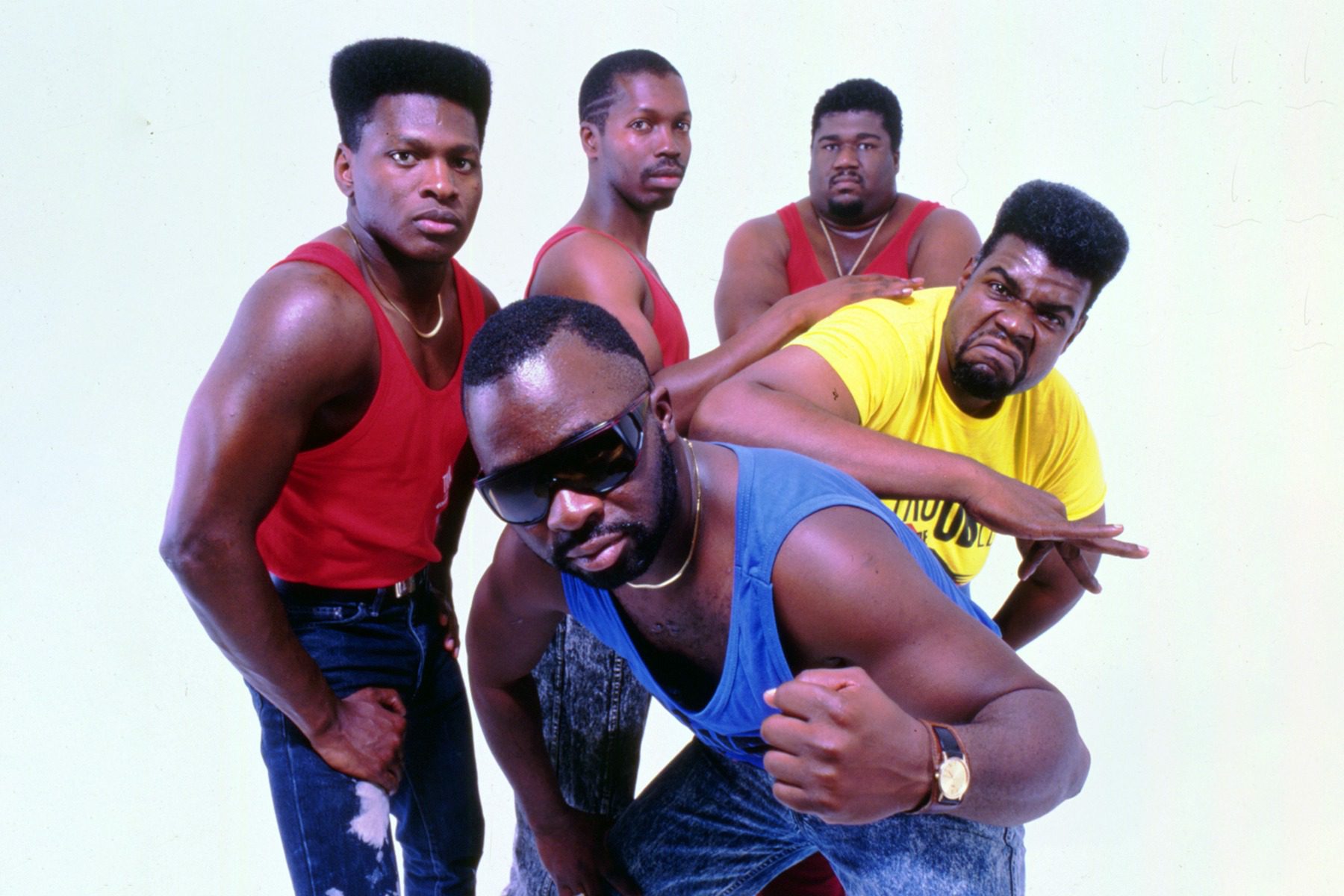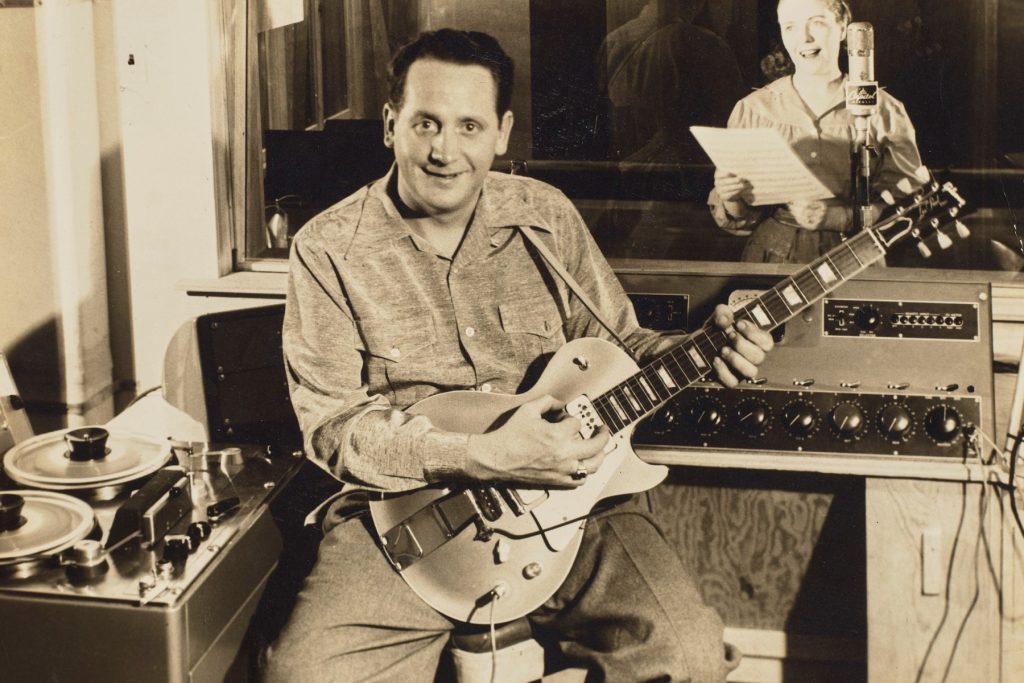
From ‘Bustin’ Loose’ to ‘Da Butt’: The Story of D.C. Go-Go in 16 Essential Tracks
Go-go music is the soundtrack of Washington, D.C. Despite a four-decade history and a few national hits like “Da Butt,” by Experience Unlimited (E.U.), and “Shake Your Thang,” by Salt-N-Pepa with E.U., the funk offshoot, often referred to as a cousin of hip-hop, is a proudly regional music — born in the nation’s capital and embraced and supported by fans in D.C., Maryland, and Virginia. A trip to the city will reveal the music blasting from automobiles and businesses as new bands carry on the tradition of a style that was birthed by the late Chuck Brown before their members were even born. This coming weekend, Pharrell Williams’ D.C. fest Something in the Water will host Rare Essence and the Backyard Band — two of the city’s greatest go-go acts — a testament to the music’s enduring relevance in the area.
Because most classic records from go-go’s Eighties heyday documented live concerts and performances, they didn’t usually contain a well-defined hook or fit easily into a radio-friendly format. Instead, the focus is on monster grooves livened up with a barrage of syncopated percussion played on cowbells, congas, bongos, and more. “The only way to record go-go is live,” Big Tony, singer-bassist and founder of Trouble Funk, one of go-go’s first and most successful bands, told this writer in a 2005 interview for The Foundation. “That’s what go-go is about. … Even if you record in the studio, you have to have a crowd.”
blogherads.adq.push(function () {
blogherads
.defineSlot( ‘medrec’, ‘gpt-dsk-tab-article-inbody1-uid0’ )
.setTargeting( ‘pos’, [“mid-article”,”mid”,”in-article1″,”mid-article1″] )
.setSubAdUnitPath(“music//article//inbody1”)
.addSize([[300,250],[620,350],[2,2],[3,3],[2,4],[4,2],[640,250]])
;
});
Ahead of Something in the Water, here are 16 tracks that provide an introduction to a homegrown, body-moving style.
Chuck Brown and the Soul Searchers, “Bustin’ Loose” (1978)
This 1978 opus from the album of the same name is often cited as the first recording to contain elements of go-go. “‘Bustin’ Loose’ was a Top 40 funk record with elements of go-go, especially in the breakdown,” Big Tony later said. The record, with its irresistible percussive breakdown, found its way into the crates of many New York DJs, becoming a popular breakbeat in early-Eighties hip-hop, and a popular sample in later rap, R&B, and dancehall reggae. “Bustin’ Loose” spent four weeks at the top of Billboard’s R&B singles charts early in 1979, peaking at Number 34 on the Hot 100. The heavy bass line and addictive horns on the hook and bridge made “Bustin’ Loose” a proto-go-go anthem. “‘Bustin’ Loose’ busted everything loose,” Brown said in 2009. “This is what go-go is about.”
E.U., “Knock Him Out Sugar Ray” (1980)
In 1980, go-go wasn’t even a household term in D.C. The go-go records that made it outside of the Virginia-Maryland-D.C. region were seen as funk records, as was the case with Experience Unlimited’s “Knock Him Out Sugar Ray.” Many of hip-hop’s early DJs like Charlie Chase of the Cold Crush Brothers and the late DJ Darryl C of the Crash Crew began taking two copies of “Knock Him Out Sugar Ray” and extending the drum breakdowns for their respective MCs to rhyme over. As a result, “Knock Him Out” became the bed for “Rappin’ Ain’t No Thing” by the Boogie Boys, “Bring the Beat Back” by Steady B, and scores of other rap records and live performances.
E.U., “E.U. Freeze” (1980)
Almost a decade before they would find national fame with “Da Butt,” E.U. dropped this gem — the B side to “Knock Him Out Sugar Ray” — that would be name-checked in Kurtis Blow’s “Party Time.” Musically, “E.U. Freeze” is like a stripped-down version of its A side counterpart, with band members instructing listeners in different places like D.C, Atlanta, L.A., Chicago, Virginia, and North Carolina to “freeze.” It’s still a staple in the group’s live sets.
Trouble Funk, “Pump Me Up” (1980)
“Pump Me Up” was a special record. It captured not only the magic of rap, which was still a new genre — hitting the music scene less than a year before “Pump Me Up” — but also the drum-heavy power of go-go, which was still new to its native D.C. Trouble Funk’s members, who didn’t claim to be MCs, actually did the rhyming. References to characters from the Fat Albert cartoon were mixed with braggadocious party tales, which fit perfectly over the top of the synth- and percussion-driven track. As turntablism progressed in the early 1980s, “Pump Me Up” — with its a cappella intro followed by bare-bones percussion — became a breakbeat and a favorite of both MCs and DJs. (Grandmaster Melle Mel and the Furious 5 actually remade the song in 1985.) Any seasoned turntablist is bound to have a minimum of two copies in their crates.
Trouble Funk, “Drop the Bomb” (1981)
“Drop the Bomb” was released in 1981 as part of the live double album Straight Up Funk Go-Go Style, which some (including Fat Tony) consider to be the genre’s official debut on record. The popularity of the song forced the band, which recorded on its own label, TF Records, to release the song as a single. In 1982, Sylvia Robinson’s Sugar Hill Records (the first successful independent rap label) would release “Drop the Bomb” on an album by the same name, even signing the group to a new deal. Single versions of “Drop the Bomb” start with the volume fading in, because the track originated as a routine of sorts that happened in the middle of Trouble Funk’s concerts. Musically, the song is a combination of horn lines, bomb-dropping sound effects, masterful call-and-response from the thunderous voice of Big Tony (“Can we drop the bomb on the Northwest crew?”), and of course, the sound of a raucous, groove-hungry crowd.
Trouble Funk, “Let’s Get Small” (1982)
“Let’s Get Small” stands out among a run of undeniable early-Eighties singles from Trouble Funk, including “So Early in the Morning,” “The Beat,” “Hey Fellas,” and “E Flat Boogie.” In spots, the track is full of incredible guitar and horn work, thumping bass, and melodic keyboard lines. In others, it features little more than percussion — and the percussion is perfection. The track is the sound bed for “Criminal Minded” by Boogie Down Productions for good reason. It begs for an MC to rhyme hard over it, but at the time of its original release, it was feel-good funk music that fueled house parties, portable radios, and nightclubs.
blogherads.adq.push(function () {
blogherads
.defineSlot( ‘medrec’, ‘gpt-dsk-tab-article-inbody2-uid1’ )
.setTargeting( ‘pos’, [“mid-article2″,”mid”,”in-article2″,”mid-article”] )
.setSubAdUnitPath(“music//article//inbody2”)
.addSize([[300,250],[300,251],[620,350],[2,4],[4,2],[3,3],[2,2]])
.setLazyLoadMultiplier(2)
;
});
Kurtis Blow and E.U., “Party Time” (1982)
Although Trouble Funk merged rap and go-go in 1980, it took a few years for actual rap artists to catch on. Go-go was so regional that rappers were only able to experience it when they visited or performed in D.C. Kurtis Blow, rap’s first superstar and the genre’s first artist to sign to a major record label, witnessed go-go’s power when he headlined the Capital Centre, in the D.C. suburb of Landover, Maryland, in the early 1980s. “I was performing at the Capital Centre when ‘The Breaks’ was hot, and E.U. came onstage and the crowd went crazy,” the “Basketball” rapper told this writer in a 1998 interview.
“The same thing happened when Trouble Funk and Chuck Brown came out. I just knew that I was gonna blow these little local acts away. When I came with my ‘Throw ya hands in the air,’ nobody responded! I knew that I needed to be a part of what they were doing.” The sound was so new that on the first few lines of his first verse of “Party Time,” his best-of-both-worlds team-up with E.U., Kurtis breaks down exactly what go-go is: “In the capital of the nation/There’s a brand-new sound sensation/It’s gonna be a revelation/Let me show you what I mean.” Kurtis Blow’s collaboration would be the first of a few between go-go and rap artists.
Slim, “It’s in the Mix” (1982)
“It’s in the Mix” is basically a Trouble Funk song topped by the call-and-response vocals and party-fueling antics of band associate Slim on top. The intro contains Slim’s signature “Don’t touch that stereo” a cappella, which became so popular that most people called the song by that name. “Slim was just a Trouble Funk fan who came to the shows, and he was more like a character,” Big Tony recalled. “He would do crazy things like yell at the top of his lungs — things like ‘I’m gon’ tell’ and ‘Call the police.’ He would come to the front of the stage with a huge boom box and yell ‘Don’t touch that stereo.’ I saw how entertaining he was, so I took him into the studio to see if it would work on a recording.”
Trouble Funk, “Trouble Funk Express” (1982)
The futuristic sounds of Germany’s Kraftwerk made their way into hop-hop early on through songs like “The Man Machine,” “Numbers,” and “Trans-Europe Express.” (The Soul Sonic Force’s game-changing “Planet Rock” was based heavily on the latter song.) Always a forward-thinking band, Trouble Funk took what was an electronic-music and hip-hop staple and turned it into a go-go jam. Complete with vocoders and their signature roto-tom intro, “Trouble Funk Express” is a slow-tempo banger that incorporates the best parts of the original into one of the group’s tightest studio performances.
Trouble Funk, “4th Gear” (1983)
Trouble Funk’s “4th Gear” appeared on their 1983 triple album In Times of Trouble, released on their own D.E.T.T. label. The live portion of the album was later picked up by Island and renamed Saturday Night Live. More polished than their previous live albums, many fans regard this as their best live outing. In particular, “4th Gear” has been sampled by LL Cool J, Kid ‘n Play, Sweet Tee, Salt-N-Pepa, and many others.
Tilt, “Arkade Funk” (1983)
Not many songs encapsulate an era as perfectly as “Arkade Funk,” a tribute to the early-Eighties pop-cultural dominance of Pac-Man and arcades. Although the credits read that Tilt were produced by Trouble Funk, Tilt actually were Trouble Funk, performing under an alias, as they did at times, since they were signed to an exclusive deal with another record label. Instrumentally, “Arkade Funk” offered some of the best go-go beats yet committed to record. Vocally, it was a conversation between Pac-Man and the four ghosts that he pursues during the game. “Me and my cousin Dyke used to go to the arcades with a tape recorder and record these sounds,” Big Tony said. “That’s how the record came about. We were gonna use the actual sounds originally, but it didn’t work right, so we studied the sounds, then went to the actual keyboards and synthesizers and re-created the sounds. We knew they had to come from somewhere.”
blogherads.adq.push(function () {
blogherads
.defineSlot( ‘medrec’, ‘gpt-dsk-tab-inbodyX-uid2’ )
.setTargeting( ‘pos’, [“mid”,”mid-articleX”,”in-articleX”,”mid-article”] )
.setSubAdUnitPath(“music//article//inbodyX”)
.addSize([[300,250],[300,251],[3,3],[620,350],[2,2]])
.setLazyLoadMultiplier(2)
;
});
Chuck Brown and the Soul Searchers, “We Need Some Money” (1984)
The issues affecting urban America in 1984 were being heavily broadcast through music. At the same time that Kurtis Blow was questioning whether it was “Party Time” just four hours north of the nation’s capital, Chuck Brown was echoing the same issues on his latest release. With its chanted bridge, “Mastercard/Visa/American Express, I ain’t got nothin’ against no credit card, but the cash is the best,” “We Need Some Money” was a danceable indictment of Reaganomics. Elsewhere, Brown proclaims, “Each and every dollar that I come across goes into my gas tank and out my exhaust.” Sounds eerily familiar.
Junk Yard Band, “Sardines” (1986)
Until Trouble Funk and E.U. signed deals with major labels in the late Eighties, go-go music was relegated to small, independent D.C. labels. To the surprise of rap and go-go fans alike, the CBS-distributed Def Jam Records — the same label that backed LL Cool J and the Beastie Boys — released the Junk Yard Band’s “Sardines” and “The Word” in 1986. This release would give hope to up-and-coming go-go acts that they too could sign with a major label. “Sardines” also received exposure in Run-DMC’s cult film Tougher Than Leather. The call-and-response hook spotlighting a strikingly weird culinary combination (“Sardines, hey/And pork and beans”) made for an extremely effective hook on top of a synthesizer and drum-heavy sound bed. Like many of its predecessors, “Sardines”/“The Word” would be sampled by many rap acts.
Little Benny and the Masters, “Cat in the Hat” (1987)
Go-go was more than just catchy call-and-response vocals over funky beats. Like their rap counterparts, go-go artists would often tackle social issues, and that’s just what Little Benny and the Masters did on their 1987 release “Cat in the Hat.” A commentary on the crack epidemic that was ravaging urban America, the hook (“Cat in the hat/Used to do smack/Now he does crack/He can’t get back”) sounded especially timely over a horn-heavy, almost jazz-influenced go-go beat.
Doug E. Fresh and Rare Essence, “I’m Gettin’ Ready” (1988)
Much like Kurtis Blow and other internationally recognized rap artists, Doug E. Fresh learned the power of go-go music early on. For Doug’s 1988 album, The World’s Greatest Entertainer, he collaborated with Rare Essence on “I’m Gettin’ Ready.” Doug harmonized and rhymed over a mid-tempo beat supplied by one of D.C.’s great go-go bands, and followed up with a remix that contained a “bonus beats” instrumental version, which became the bed for D.C.’s DJ Kool and his hit “Twenty Minute Workout.”
E.U., “Da Butt” (1988)
“Da Butt” became, without a doubt, the most successful record in the history of go-go, ironically because it broke a primary rule of the genre’s early offerings: It featured a very defined hook. Sugar Bear, E.U.’s lead singer often mimicked Larry Blackmon — lead singer of Cameo, who was himself mimicking the Ohio Players’ late Sugar Foot — and the hook and the song itself could have belonged to either group if not for the signature go-go percussion in the background. It didn’t hurt at all that “Da Butt” was featured in Spike Lee’s 1988 film, School Daze, and appeared on the soundtrack. (Lee also directed the song’s video, which featured a signature booty-shaking dance.) Though go-go had been a recorded genre for a decade by this point, “Da Butt” was much of America’s exposure to it.
blogherads.adq.push(function () {
blogherads
.defineSlot( ‘medrec’, ‘gpt-dsk-tab-inbodyX-uid3’ )
.setTargeting( ‘pos’, [“mid”,”mid-articleX”,”in-articleX”,”mid-article”] )
.setSubAdUnitPath(“music//article//inbodyX”)
.addSize([[300,250],[300,251],[3,3],[620,350],[2,2]])
.setLazyLoadMultiplier(2)
;
});
“I’m never gonna leave. I don’t care if we get worldwide attention,” E.U. vocalist-bassist Gregory “Sugar Bear” Elliot told The Washington Post in the wake of the song’s success. “We’ll always be a go-go act. I’ll always live in D.C., and D.C. is always a go-go city.”




